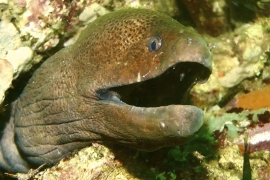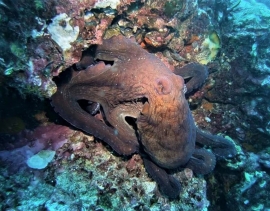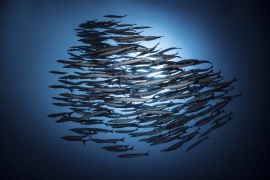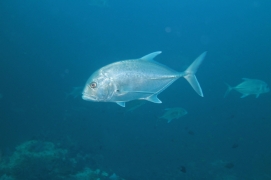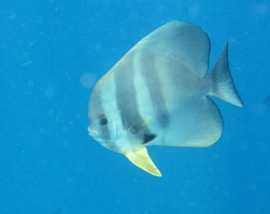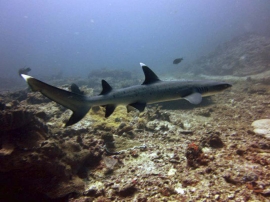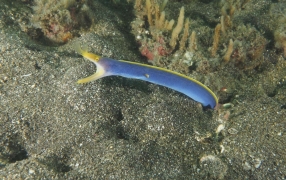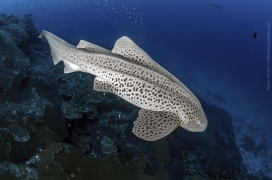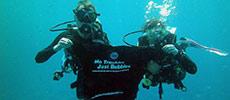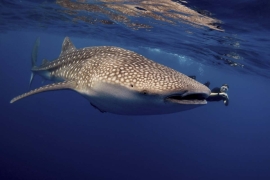
Raa Atoll Liveaboard Diving
Raa Atoll is a large northwestern Maldives atoll, with lots of excellent scuba diving sites. It opened up to tourism later than the central Maldivian atolls and is, therefore, less explored for diving, and less developed. It's located north of Baa Atoll by a Moresby Channel, which that is just 3.3km wide. Raa Atoll is 70 kilometres long and 30 kilometres wide at its widest point. There are two small islands just to the north of Raa, which are technically part of the Raa administrative area. These are Alifushi & Iththigili. There are approximately 90 islands within Raa Atoll, nearly all of which are uninhabited, and there are currently a dozen resorts. Budget tourism is still limited in Raa Atoll.
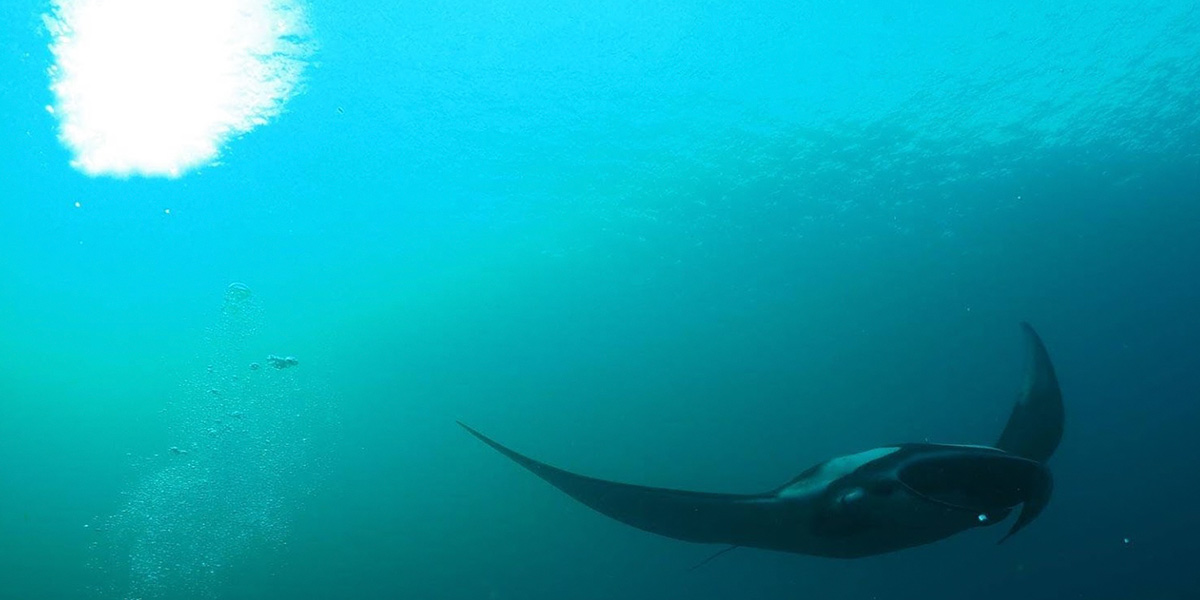
Inside the atoll's lagoon, there are many thilas, which are submerged pinnacles, condensed mainly in the central and southern areas. The western edge of Raa Atoll faces the open sea of The Indian Ocean, and this is evident by the shape of the farus, islands and sandbars. The atoll's eastern side is almost a straight line from north to south, containing more than twenty islands, including the capital, Ungoofaaru. Between these islands are deep channels (kandus) which provide lots of exciting dive sites. Raa Atoll's eastern side faces Lhaviyani Atoll & Noonu Atoll, thus getting some shelter from wind & currents.
During the high season, Maldives diving liveaboards visit Raa Atoll as part of their North Central or Northern highlights itineraries. The trips visit several atolls during the week and attempt to time each location with the best tides to encounter as much of the best marine life as possible. This can include large filter feeding and predatory pelagic species, but Raa Atoll is particularly well known for huge shoals of fish of various species. At times, some of the dive sites are like fish soup, such is the number of fish in every direction. The liveaboards tend to spend more time around the thilas than in the kandus when diving at Raa Atoll, but each occasion depends on many factors, including weather, guests' needs & requests, and recent marine life sightings.
There are dozens of excellent dive sites, most of which are in the south of the atoll. They are located around the edges as well as in the lagoon at the thilas and islands. The two most-popular Raa Atoll dive sites are Fenfushi Giri and Reethi Thila.
Fenfushi Giri
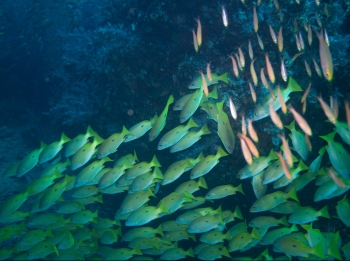 Snapper: Credit Alex KiermayerFenfushi Giri is next to Fenfushi Island, and a sister pinnacle of Fenfushi Thila. Giris are similar to thilas but their pinnacles are nearer to the surface. Fenfushi is in the southwest corner of Raa Atoll. What makes this dive site so special is the nearby channels, not just between Fenfushi and its direct neighbours, but also Moresby Channel separating Raa Atoll & Baa Atoll, and the incoming currents from the ocean on the west side. Almost anything can be seen swimming past at Fenfushi Giri or Thila, and while divers are waiting for something big, there are so many other fish, reptiles and marine life to distract them. Hard soft corals and anemones are home to smaller species and ensure that photographers have lots to shoot on every dive at Raa Atoll. Lots of very deep water surrounds the area, and although diving in The Maldives is limited to 30 metres, nutrient-rich cooler water is being pushed up most of the time. This feeds the reef's residents and attracts larger species as well.
Snapper: Credit Alex KiermayerFenfushi Giri is next to Fenfushi Island, and a sister pinnacle of Fenfushi Thila. Giris are similar to thilas but their pinnacles are nearer to the surface. Fenfushi is in the southwest corner of Raa Atoll. What makes this dive site so special is the nearby channels, not just between Fenfushi and its direct neighbours, but also Moresby Channel separating Raa Atoll & Baa Atoll, and the incoming currents from the ocean on the west side. Almost anything can be seen swimming past at Fenfushi Giri or Thila, and while divers are waiting for something big, there are so many other fish, reptiles and marine life to distract them. Hard soft corals and anemones are home to smaller species and ensure that photographers have lots to shoot on every dive at Raa Atoll. Lots of very deep water surrounds the area, and although diving in The Maldives is limited to 30 metres, nutrient-rich cooler water is being pushed up most of the time. This feeds the reef's residents and attracts larger species as well.
Reethi Thila
Reethi Thila is inside the lagoon and attracts lots of marine life around its reefs, overhangs, caverns and drop-offs. The coral isn't as attractive as at some other atolls, but this is more than made up for by the sheer number of schooling fish in the area. Sharks & rays can be seen deeper down, and more colourful reef fish and invertebrates are all over the dive site. The diversity and density of life makes Reethi a 'must' for your Raa Atoll liveaboard itinerary.
Other popular dive sites at Raa Atoll include the following, but there are dozens more.
The Labyrinth is on the western side of the centre of the lagoon and you're likely to see whitetip or Grey Reef sharks here.
The Wall is on the eastern side of Raa Atoll, and as its name suggests, it's a sheer drop from shallow to deep water.
Sola Corner, Ghost Island, Vaadhoo, Bathalaa, and Beriyan Kuda are among other popular Raa Atoll diving sites.
Conditions at Raa Atoll
When to dive at Raa Atoll
You can visit Raa Atoll all year round, but the best months are January to April which is the middle of the northeast monsoon. June to November is the southwest monsoon, and the months in between can be unpredictable from one year to the next.
What type of dive site is Raa Atoll
Overhangs, drop offs, caves, walls
Where is Raa Atoll?
Northwest Maldives, and making up half of the centre of the northern atolls region. 150 kilometres north-northwest from Malé.
How to get to Raa Atoll
Visiting Raa Atoll for scuba diving is best done on a Maldives liveaboard safari. Some of these leave from & return to Malé, and others may use ports in the north of the country.
Who can dive at Raa Atoll
All levels of certified diver can enjoy Raa Atoll, but if you're joining a Maldives liveaboard cruise, some operators insist on 20 or 50 logged dives and Advanced certification. This is so that the team can plan an itinerary to visit all of the best dive sites.
What marine life can you see at Raa Atoll?
Raa Atoll marine life is mainly made up by many huge schools of reef fish. So many fish that you can sometimes lose your buddy in the fish soup! Reef sharks and medium-sized rays are commonly seen here as well. All year round there's a chance of seeing Manta Rays, and occasionally a Whale Shark may be pass by. Moray eels and various crustaceans are easily seen and these are always popoular with photographers.
Summary of Raa Atoll
Not many Maldives liveaboards visit Raa Atoll, and there are very few resorts here. This means that for those lucky enough to come diving, there's always going to be a lot more fish than divers! The reefs are healthy, partly due to the location facing the ocean to the west, and also because the region opened up to tourism later than the central atolls, such as Malé & Ari. If you enjoy diving in 'fish soup' don't miss diving at Raa Atoll.

